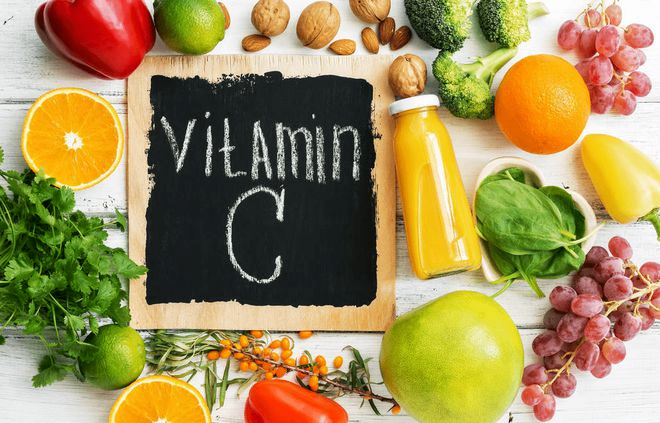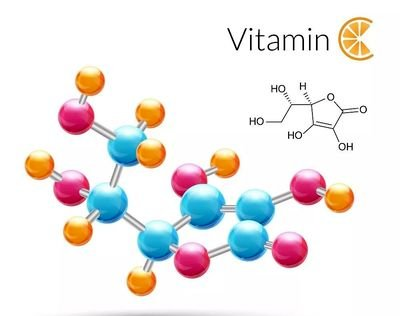


Vitamin C
— The Troublemaker Hidden in Test Results

VitaminC, as everyone knows, is often highlighted in the marketing of many foods, indicating that VitaminC is indeed a beneficial substance. VitaminC, also known as ascorbic acid, is a water-soluble vitamin that can enhance the body’s immunity by promoting antibody formation; it participates in collagen synthesis, thereby maintaining the health of skin, mucous membranes, teeth, and bones, and promotes wound healing; it can reduce iron in the intestine to ferrous iron, facilitating iron absorption and ensuring the body’s iron needs. However, long-term excessive intake of VitaminC can irritate the gastric mucosa, causing bloating, nausea, vomiting, and other gastrointestinal adverse reactions, so it should be consumed in moderation. Do you think the adverse effects of excessive VitaminC are limited to this? NO~, in the laboratory, VitaminC acts like a mischievous troublemaker, secretly obscuring the “eyes” of the testing personnel seeking the truth~
Vitamin C is actually not easy to handle
The effectiveness of Vitamin C primarily lies in its molecular structure, which contains a diene alcohol structure that gives it a strong reducing property. In many laboratory tests, redox reactions occur, and the strong reducing property of Vitamin C can interfere with the substrates and processes, leading to inaccurate results that do not reflect the true condition of the specimen. There are many factors that can interfere with test results; for instance, lipemia and hemolysis can be visually observed through centrifugation, but the Vitamin C content in the blood is not something that testing personnel can observe directly, making this invisible troublemaker quite frustrating for them! So, which specific tests does Vitamin C affect?
1. Routine Urinalysis Dry Chemistry Tests
1. Glucose: Urine glucose is typically measured using the glucose oxidase method, where glucose oxidase specifically oxidizes β-D-glucose to produce glucuronic acid and hydrogen peroxide. Hydrogen peroxide then reacts with a chromogen under the action of peroxidase. However, in the presence of Vitamin C, it can react with the intermediate product hydrogen peroxide, leading to a decrease in color intensity or no color change, resulting in a false negative. If the dry chemistry reagent uses the Benedict’s method, it can lead to a false positive.
2. Occult Blood: The occult blood test is based on the principle of hemoglobin contact activity, where hemoglobin and myoglobin catalyze the decomposition of peroxides, causing tetramethylbenzidine to oxidize and turn blue. Vitamin C can directly react with peroxides on the test paper, leading to a failure to oxidize tetramethylbenzidine, resulting in a false negative.
3. Bilirubin: The urine bilirubin test is based on the azo-coupling method, where 2,4-dichloroaniline diazonium salt reacts specifically with bilirubin in an acidic medium, producing different colors corresponding to bilirubin concentration. High concentrations of Vitamin C can inhibit the azo reaction, leading to false negatives for bilirubin.
4. Nitrite: If there are bacteria in the urine that can reduce nitrate to nitrite, nitrite in the urine reacts with p-aminobenzenesulfonic acid to form a diazo compound, which then combines with tetrahydroquinoline-3-phenol to produce a pink color. Vitamin C primarily inhibits the diazo reaction of nitrate, causing a false positive.
2. Fecal Occult Blood
When fecal occult blood is tested using chemical methods, the interference principle is the same as that of the urine occult blood test, leading to false negatives, with no impact on immunological methods.
3. Biochemical Tests
Many biochemical tests utilize the Trinder reaction, such as glucose, uric acid, triglycerides, cholesterol, high-density lipoprotein, and low-density lipoprotein. The Trinder reaction, also known as the endpoint colorimetric method, is based on the principle that the substance being measured produces hydrogen peroxide through enzymatic action, which in the presence of 4-aminoantipyrine (4-AAP) and peroxidase (POD) generates a red quinone imine compound. In the presence of Vitamin C, it competes with chromogenic substances for H2O2, consuming the H2O2 produced during the oxidation process, leading to reduced pigment formation and lower measurement results for these tests.
Some reagent manufacturers consider the impact of Vitamin C on test results when designing testing methods, for example, by adding a Vitamin C detection item to urine dry chemistry test strips to alert testing personnel and doctors to the presence of Vitamin C in urine: in certain biochemical reaction systems that are easily interfered with by Vitamin C, such as the Trinder reaction, ascorbate oxidase is added to mitigate the negative interference of Vitamin C on results. However, in cases of excessive Vitamin C intake or when clinical doctors administer large doses of Vitamin C intravenously, exceeding the interference capacity of the reaction system, the impact of Vitamin C on test results is unavoidable.

Contributed by | Wang Lifei, Department of Laboratory Medicine, Yindu District People’s Hospital, Anyang City
Edited by | Publicity DepartmentFirst Review | Wang LifeiSecond Review | Hu AitingThird Review | Ren Shitong
◆◆ Clear Thinking, Seek Development | Interpretation of the “11412” Work Approach of Yindu District People’s Hospital◆◆ Focus on Practicality and Clear Thinking to Unite and Develop — This is How Yindu District People’s Hospital Will Operate in 2024!◆◆ Announcement for Recruitment of Health Professionals at Anyang City Yindu District People’s Hospital◆◆ “2229595, one call handles everything!” Yindu District People’s Hospital has launched a 24-hour service hotline◆◆ Significant Price Reductions for Testing and Laboratory Services at Yindu District People’s Hospital

